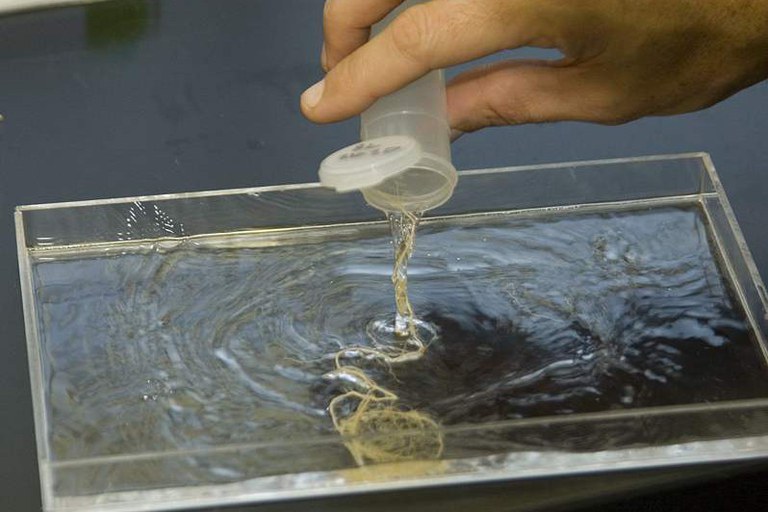
Washed bean roots poured into tray for scanning. These plants were grown in a sand/vermiculite mix to facilitate washing of roots.
The first step is acquiring washed roots. This can be the most difficult and laborious step in the experiment if plants are grown in a solid medium. This should be considered in design of experiments. Soil or growth media with a high sand content can greatly simplify this step, while high clay or organic matter content can make it extremely tedious. Harvesting of younger plants also can simplify this step. In many cases, we find it impractical to scan the entire roots system of a plant. In such cases, we take a representative sample that we scan and analyze before determining dry mass. We then use the length/dry mass ratio (Specific Root Length) of the sample to estimate root length of the whole root system based on dry mass. In studies of root architecture, each class of root or soil horizon could be sampled separately - the sampling design will depend on the research questions.

